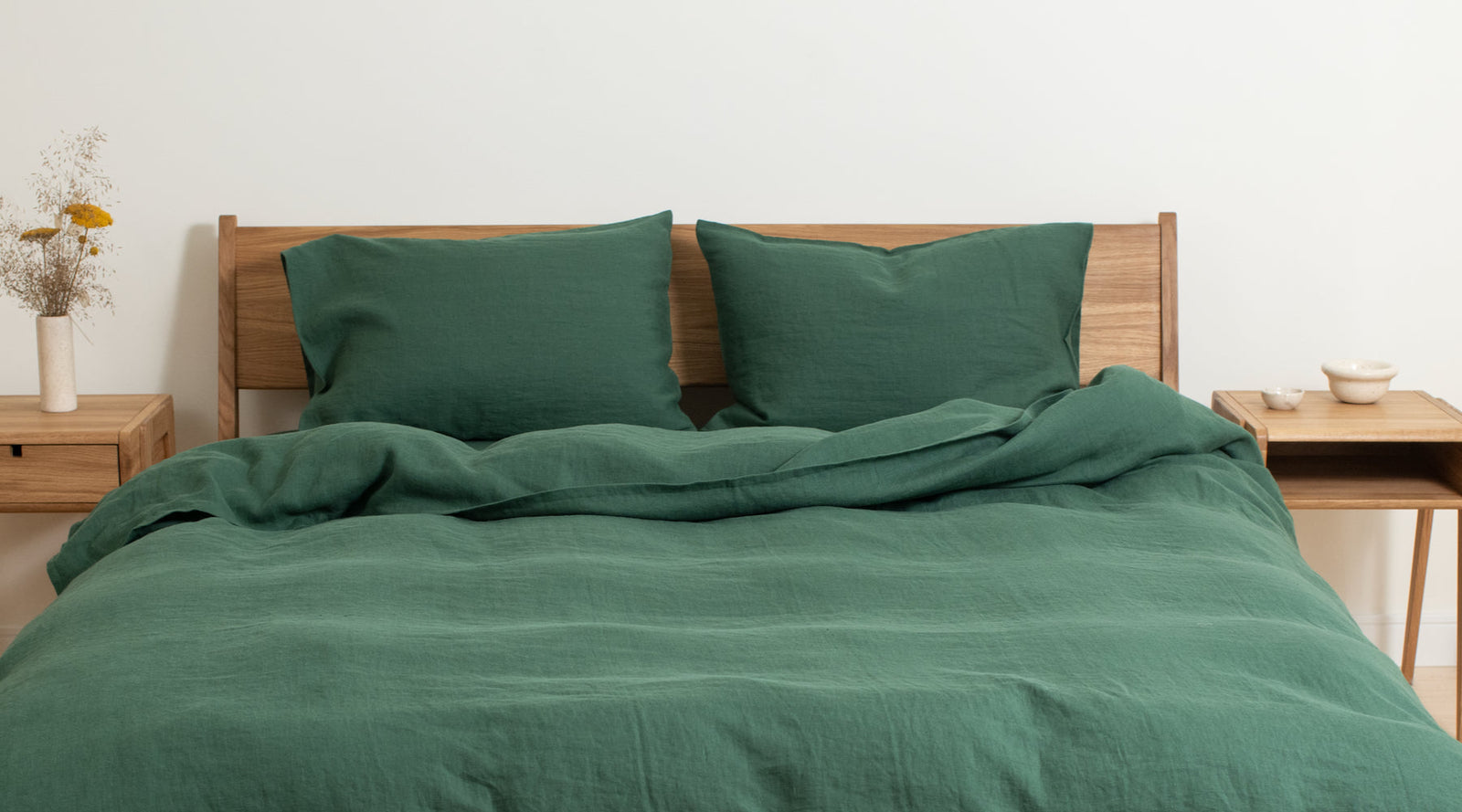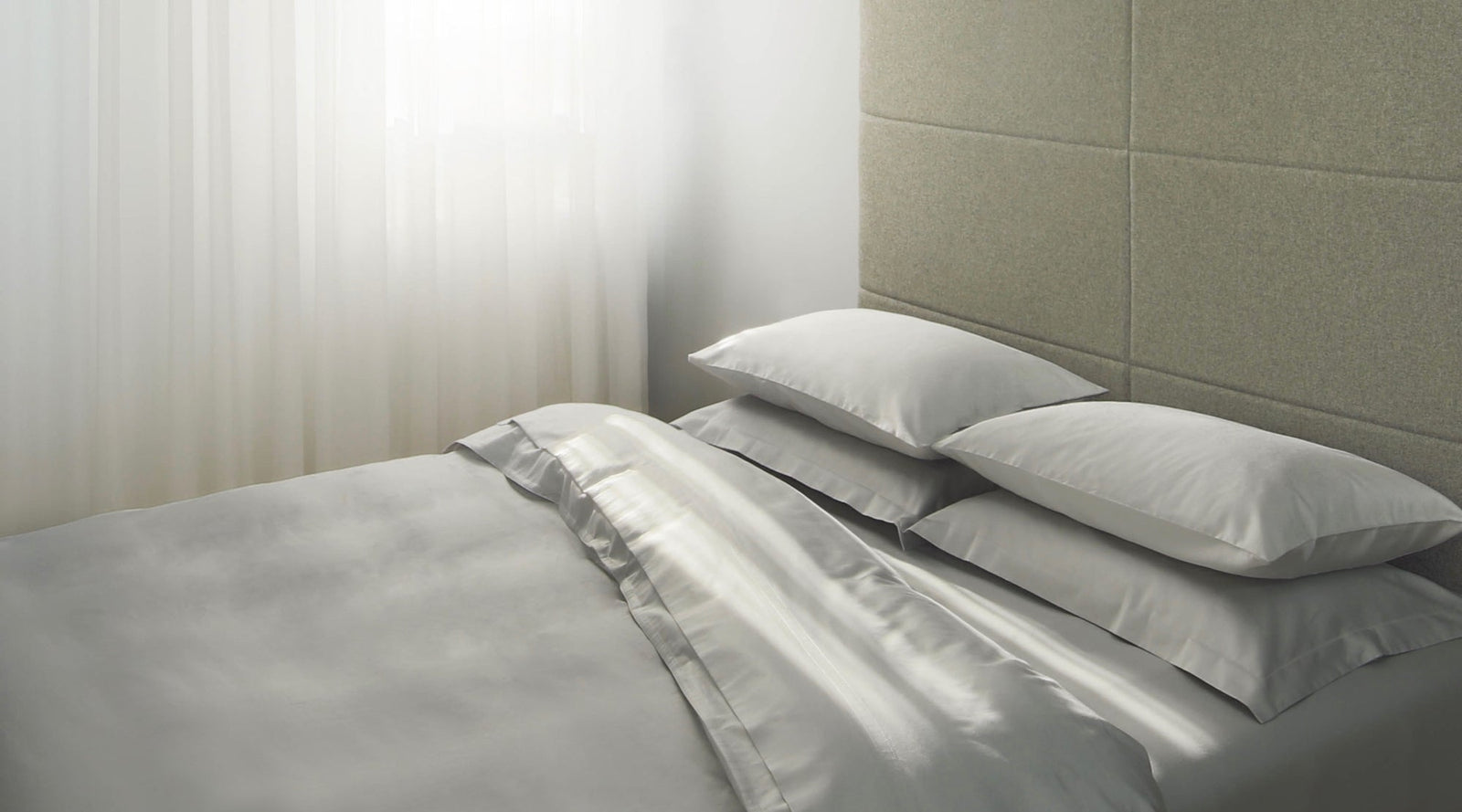When we think about home décor, our focus often goes to furniture or decorative details. However, what truly impacts our daily sense of comfort and rest is the quality of our bedding.
Quality bedding is not just an aesthetic detail, it’s the key to good sleep, proper temperature regulation, and year-round comfort. That’s why choosing the perfect bedding throughout the year becomes an art of adjusting materials and textures to different weather conditions.
Autumn brings cooler evenings and a desire to snuggle up. This is the perfect time for natural materials. Linen provides warmth while staying breathable, making it ideal for transitional periods. Cotton sateen in deeper tones adds softness and elegance to your bedroom. Quality autumn bedding wraps you in comfort, creating a feeling of stability and calm that suits the season.
During winter, we all crave softer and warmer layers. Dense cotton and linen bedding form the foundation of perfect comfort, while silkpillowcases add warmth and a touch of luxury. For extra layers, wool, cashmere, and alpaca blankets create a sense of opulence and turn every winter night into a warm retreat. Perfect winter bedding combines natural fibers and multiple layers for both coziness and elegance.
Spring brings warmer days, though the air is still crisp. You need bedding that’s light but warm enough to follow temperature changes. Percale cotton is ideal, it’s soft, breathable, and pleasant on the skin. Natural tones brighten up the space and add simplicity, turning your bedroom into the perfect place to unwind after a busy day.
Summer nights call for bedding that feels fresh and allows your skin to breathe. Linen and percale cotton are the top choices. Linen is naturally airy and comfortable, while percale cotton adds smoothness and lightness. This combination creates the perfect balance, even on the hottest nights. Quality summer bedding follows your body’s rhythm, providing rest without trapping heat or moisture.
Regardless of the season, some universal criteria always apply:
Material: Natural fibers such as cotton, linen, silk, cashmere, or alpaca ensure comfort and durability.
Maintenance: Bedding should be easy to wash and long-lasting.
Comfort: Its main purpose is to help you feel good—without moisture retention or discomfort during the night.
Aesthetics: The design and color should reflect your personal style and the atmosphere of your home.
Quality bedding is the one that fits both your body and your space—something you’ll enjoy using all year long.
Choosing quality bedding is not just about aesthetics, it’s about quality of life. Once you find the perfect bedding, you’ll noticethe difference in your sleep, energy, and overall mood. So next time you shop, pay attention to the material and its adaptability to the season.
If you want to discover a collection that combines luxury, comfort, and durability, explore our selection and find the perfect bedding for every season.
Linen bedding is becoming an increasingly popular choice in modern interior design. Its natural texture, elegant appearance, and numerous benefits make it an ideal addition to any home.
Both types of pillowcases have the same inner dimensions, with the only difference being in the edges. The classic pillowcase has neat edges, while the Oxford pillowcase features an extra piece of fabric that creates an additional border.
Although much about the nature of dreams and their complexity remains unknown, medical and psychological communities generally agree that dreams reflect, at least in part, our subconscious activity. There are several classifications of dreams, and this one seemed the most interesting to us.



